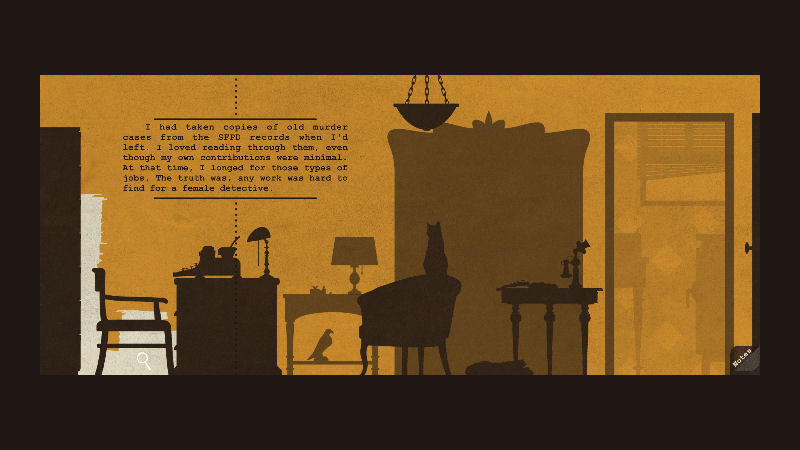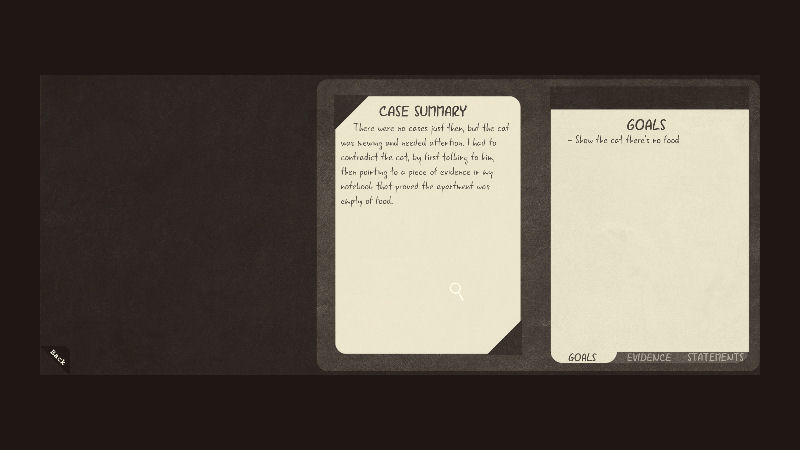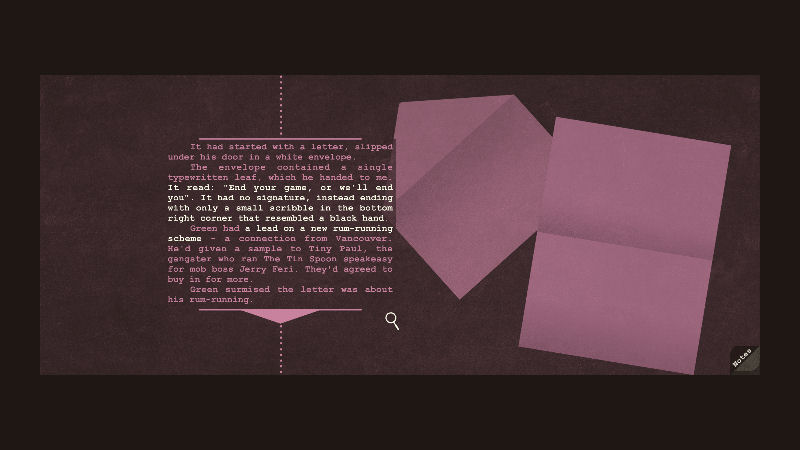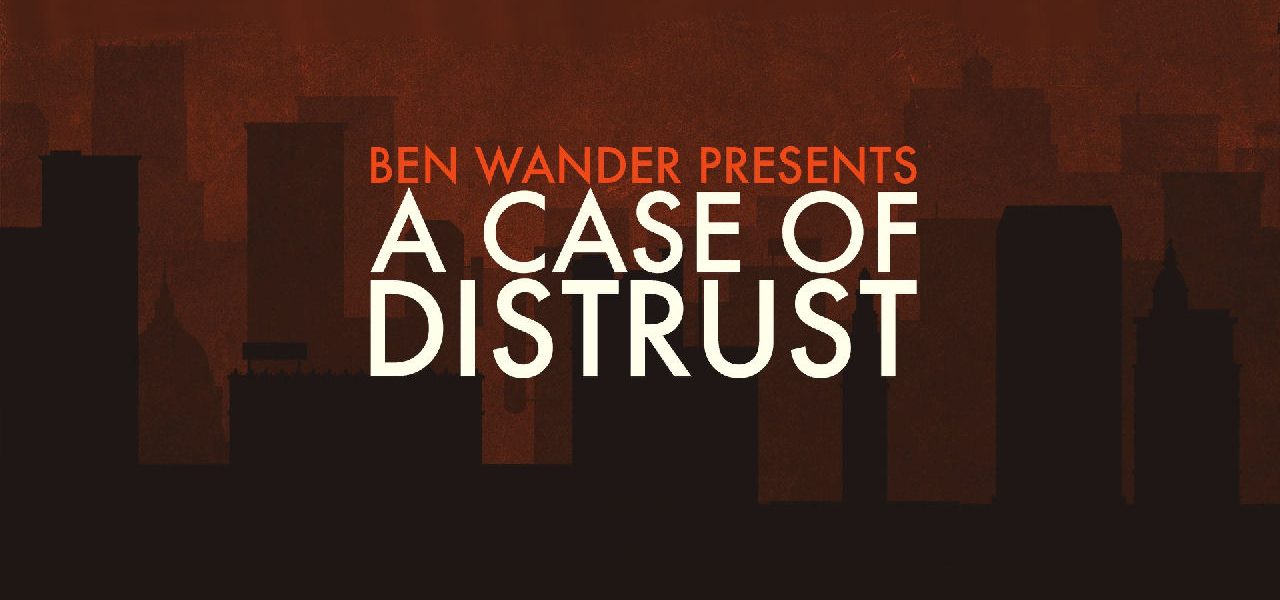A Case Of Distrust Review
As a period piece, A Case of Distrust is well-researched and lushly imagined. As a mystery, it’s surprisingly (and probably to some, disappointingly) easy to follow.







The Roaring Twenties are a rich time in our cultural imagination — the historical reality of flappers dancing, gangsters packing Tommy guns, and speakeasies stuffed with illicit booze make the period a tempting backdrop for fiction. It’s no surprise then, that Ben Wander (founder of the fittingly named studio The Wandering Ben) chose San Francisco in 1924 as the setting for his first indie mystery, A Case of Distrust. This visually arresting narrative noir follows the conventions of the genre while infusing the game with a unique and effective visual style.
Like most 1920s-era protagonists, you’re a hardened private eye with no food in the fridge but plenty of cigarettes to cloud the air in your darkened office. Unlike most of these detectives, you’re a woman — Phyllis Cadence Malone. Instead of the usual bombshell broad, your doorway is darkened by a small-time bootlegger named Connor Green who’s received a threatening letter and wants you to find out who’s after him. As you dig into the situation, you’ll discover a knottier case swimming beneath the surface.

As a period piece, A Case of Distrust is well-researched and lushly imagined. As a mystery, it’s surprisingly (and probably to some, disappointingly) easy to follow. I’m used to finding myself scratching my head when I team up with characters like Sherlock Holmes and Hercule Poirot, but it wasn’t hard for me to land quickly on the first person I noticed that checked all the necessary boxes. I was startled to wrap the case up after just 2.5 hours of play – I think the straightforwardness of this game will appeal to some players and deter others.
The glitz and flash of the prohibition era have been distilled into flat bicolor scenes that suggest seedy barrooms and cluttered apartments with the use of a few objects and silhouettes. It’s a minimalist approach that’s effective both in giving the game a distinctively clean and approachable look and in keeping the player focused on the relevant details of the case. Stylish transitions keep the graphics eye-catching, but the setting is most developed by the so-smooth-you-won’t-notice-it jazz soundtrack and the historical details peppered into conversations. Your trips between different locations give you ample optional opportunities to converse with cab drivers, who will discuss everything from baseball to dance halls to Communism, offering fleeting glimpses into the concerns of the historical moment. It’s an effective mechanism that allows for more exploration of the game world, though you’ll likely find yourself clicking past it impatiently at times when you’re on the heels of a hot lead.
Like any P.I. worth her salt, you’ll find yourself grilling suspects and poking around rooms looking for clues. Your primary form of investigation is to ask characters questions and to contradict their responses with evidence accumulated in a handy notebook. Whenever you click on one of the highlighted objects in a scene or hear an interesting detail in a suspect’s testimony, it will appear as a line in your notes that can later be flourished in response to other phrases. For example, if a character says he was in a speakeasy all night but another bar patron saw them leave early, you can bring up the conflicting statement and catch your suspect in a lie, which reveals another breadcrumb of information to follow, leading you closer and closer to the truth. And if you get stuck on any element of the case, you can mull over your notes with Franklin, your friendly neighborhood bartender, who will set you off on a path toward a new line of inquiry.

Detective games are notoriously scattershot at coming up with effective ways to portray the process of investigation. It’s easy to accidentally give away information the player might not have processed yet by asking leading questions or offering multiple choice answers, and A Case of Distrust has found a reasonably successful compromise in the form of P.C. Malone’s notebook. Since the detective will make note of any object in a room and any factual statement related to the case, much of the information isn’t needed, which makes it more difficult for a player to blindly guess their way through the case when digging into false statements. To accuse a suspect of the final crime, you must also supply the evidence that proves means, motive, and opportunity, which requires an understanding of how the events have transpired and, to a degree, why.
What most intrigued and failed to sate my interest is the decision to feature a female protagonist. It’s an admirable choice, but I would have liked to see this premise interrogated more rigorously. P.C. Malone hews so closely to the stereotype of the hardboiled detective — hard-drinking and hungry, no-nonsense, cold – that her femaleness feels as flat as the papery scenes she investigates. There are some nods to contemporary views about womanhood — for example, our protagonist wonders to herself, “Was my plodding career worth losing traditional happiness?” — but these moments feel placating and perfunctory, a way of excusing the playground of the 1920s for being racist and sexist and dangerous for so many of the people living then.

I like P.C. Malone, and I want to play more games starring her — but I’d also like to see a more daring exploration of what a woman trying to access a man’s world might have looked like. Even today, a century later, women are barred from countless opportunities, forced to find more creative ways to sneak into the spaces men enter through the front door. A cunning detective seems like the perfect character to find interesting ways to subvert the limiting expectations that would have been placed upon her. Let’s hope we get to see her try.*
|
+ Vivid historical details conjured the specificity of the Roaring ‘20s
+ Female detective character
+ Sleek, minimalist design
+ Note-taking system made investigating and drawing conclusions intuitive
– Case may seem too easy or straightforward to veteran sleuths
– Certain animations, like taking a cab ride, can become tedious
– A short game for the $14.99 price tag
|

|
System Requirements
MINIMUM Mac


1688.com
October 21, 2018 at 10:53 amFantastic site. Lots of helpful information here.
I am sending it to a few pals ans also sharing in delicious.
And of course, thank you for your sweat!